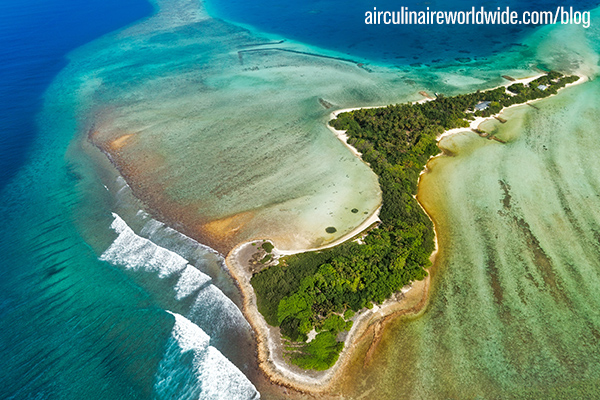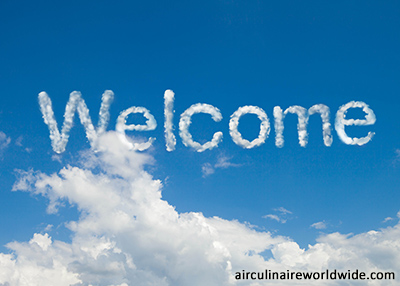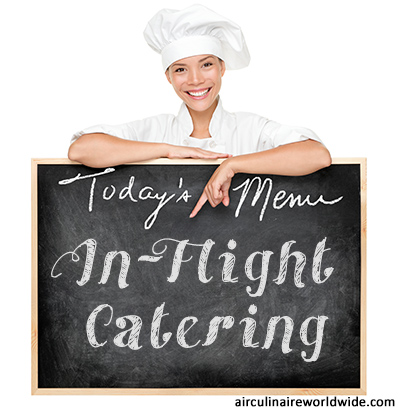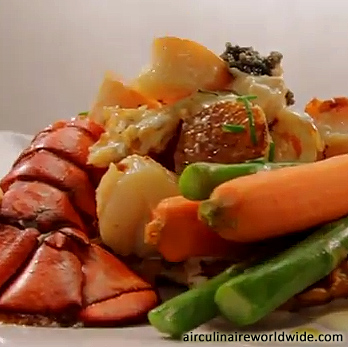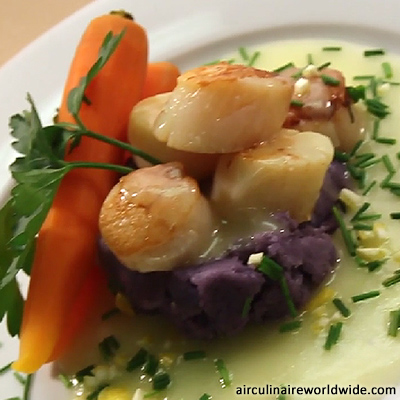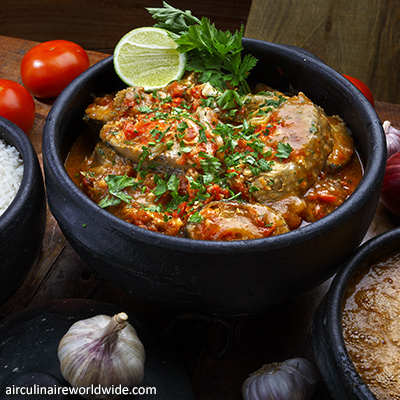In the first half of this series on planning for international in-flight catering, we covered four of the 11 major considerations for planning international in-flight catering. Below, we explore seven more areas to keep in mind before placing a catering order. Working through all of these items will give you a tremendous advantage of getting what your passengers need.
Religious Holidays and Religious Considerations
When operating into certain destinations, extra consideration may need to be given. In Islamic countries, especially the Kingdom of Saudi Arabia, pork products and alcohol is forbidden. If you have any alcohol on the aircraft, it must be sealed before landing and the latest information is now no alcohol is allowed to be brought in on aircraft which are staying on a layover. During Ramadan, the month of fasting for Muslims, catering may be limited from some outlets.
For Jewish passengers and flights operating into Israel, no shellfish or pork should be served, and no meals that mix meat and dairy should be served. These are just a sample of the Kashrut rules that must be followed. Also consider the fact that pork products are sometimes not as obvious, such as the gelatin in confectioneries, such as Haribos (gummy candies), as they contain an extract from pork. During religious holidays, such as Hanukah and Passover, catering options may be limited. In addition, it is important to know if the passengers allow you to use the aircraft plates and china, or will they be supplied sealed from a Kashrut supplier.
Food Allergies
A passenger with a food allergy is a serious safety issue and must be taken very seriously. A severe food allergy can result in anaphylaxis, which in some instances can be fatal. The flight attendant must make careful provision to communicate with catering suppliers, to ensure all the dishes, including garnishes, oils and dressings, do not contain any allergenic ingredients. This can be problematic when ordering down route, especially from a restaurant or hotel, as a truly allergen-free environment cannot be guaranteed. It is your responsibility to know or query what is in all dishes that you order, not just for the passenger with food allergies.
Onboard Equipment
Consider the aircraft being operated on and galley equipment. Is there an oven or a microwave onboard? Are there adequate chilling facilities? Do you need to make provision for chilling? If not, what can be done to ensure the catering will be kept at a safe temperature? How much space do you have for storing catering?
If ordering high-risk foods such as shellfish, caviar, Balik salmon, cheeses and dairy products, to name a few. These food items require careful refrigeration at all times. Try to order for the capability of your galley; we have to be realistic. Food safety must always be the priority!
If using a hotel down route, foils or microwave containers that fit your aircraft may need loading. Cool bags, flasks and ice gel sheets or blocks may have to be loaded for transit in order to keep the catering safely chilled. Some airports still insist catering goes through the scanner. It can be a heart-stopping moment seeing your precious cargo of catering being dragged through the scanning machine. Having it packed into a cool bag or box will be beneficial.
Costs and Budget
If your operation is cost-conscious, bear in mind some destinations where the caterers have a monopoly, or remote destinations, can be very expensive. Also, some countries like Russia, Switzerland and France are notoriously expensive for catering.
Island destinations
When travelling to some island destinations, for example, New Caledonia or the Maldives, some catering suppliers need a minimum notice of 24 hours. In remote destinations, such as the Maldives, food is delivered by sea or air to the islands and very specific items may not be available. Whenever possible, catering for these destinations, unless avoidable, should not be left until the last minute.
Time Difference
The time difference from our country of origin has to be factored in, especially if the ground time is short. In some instances, you may find yourself planning your return sectors before your outbound.
Customs and Quarantine
Some countries, such as the United States and Australia, have stringent controls on the import of foodstuffs. This means that any foods we bring in have to be thrown away. It can be heartbreaking, but it’s a fact of life!
Questions?
This is the second half of a two-part series written by Yasmin Milner. If you have any questions about this article, contact Yasmin Milner at ymilner@corporateflighttraining.com.
| This is an article by guest author Yasmin Milner of Corporate Flight Training. Yasmin is based in the United Kingdom and is an industry expert in corporate aviation. Any thoughts expressed in this article are entirely Yasmin’s and do not necessarily reflect the views of Air Culinaire Worldwide. |
If you would like to be considered for becoming a guest author, please contact socialmedia@airculinaire.com
